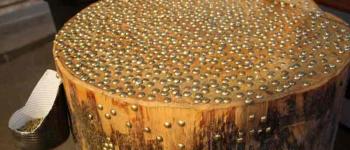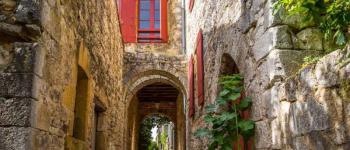
A little history...
Lalinde is the first English bastide built on the river bank in 1267 by Henri III Plantagenet.
During the Hundred Years War and the Wars of Religion, Lalinde was at the heart of the conflicts. Its fortifications are based on ramparts in the South and in the North with a complex enclosure including several successive defensive lines which are based on a set of ditches.
The importance of the device is unusual and makes Lalinde a very particular bastide.
The bastide
The charter of foundation of the city, granting freedoms and privileges to the future inhabitants, was drawn up in London on June 26, 1267, by Prince Edward, eldest son of Henri III.
Of the fortified city that it once was, there are still some remains, the ramparts on the river side, the main gate called the Bergerac gate and a filled-in gate, near the bridge, called the Saint-Front gate.
The interior of the city has kept the regular aspect of the bastide layout, with perpendicular streets, a central square and a XIXth century market hall, 1865, which replaced the old XVth century market hall.
At the corner of this square is a large stone cross bearing the date 1351, in memory of the first jubilee proclaimed by Pope Clement VI to be renewed every half century, and which attracted more than a million pilgrims to Rome in 1350.
Since the 18th century, the city has had a castle within its walls, the Château de Lalinde (or Château de la Bastide), on the banks of the Dordogne. Completely renovated at the beginning of the 19th century, it was for a time converted into a restaurant. Today it is a private residence.
In the past, the town was animated by the traffic of the inland waterway between the Auvergne and Bordeaux. It has kept its vocation of passage and stopover on the communication axis between Bergerac and Sarlat.
The canal of Lalinde
To facilitate navigation on the Dordogne, the main communication axis of the southern Périgord since the High Middle Ages, the canal of Lalinde was dug from 1838 to 1843 between Mauzac and Tuilières. All along, locks, basins, aqueducts, lockkeepers' houses and in particular the staircase of Tuilières were built before the railroad made the canal somewhat obsolete.
In the surroundings...
During your visit to Lalinde, you can also linger at the castle of Finou, or castle of Laffinoux, 15th to 18th century, in Sainte-Colombe, registered as a historical monument in 1948, and which belonged in the 19th century to the tragedian Hilarion Ballande.
Also very close, in Drayoux, the castle of La Rue, 13th to 16th century, registered in 1948. Its 16th century tower is built on an artificial feudal mound.
Without forgetting, the castle les Landes, XVIIth and XVIIIth centuries, in Sainte-Colombe.
Lalinde is also known for the legend of the Coulobre...
Tourism Information Point
Public garden
24150 Lalinde
Tel : 05.53.61.08.55
ot.lalinde@ccbdp.fr
https://www.pays-bergerac-tourisme.com/fr/decouvrir/cote-pierres/bastides/lalinde
Translated with www.DeepL.com/Translator
(free version)





